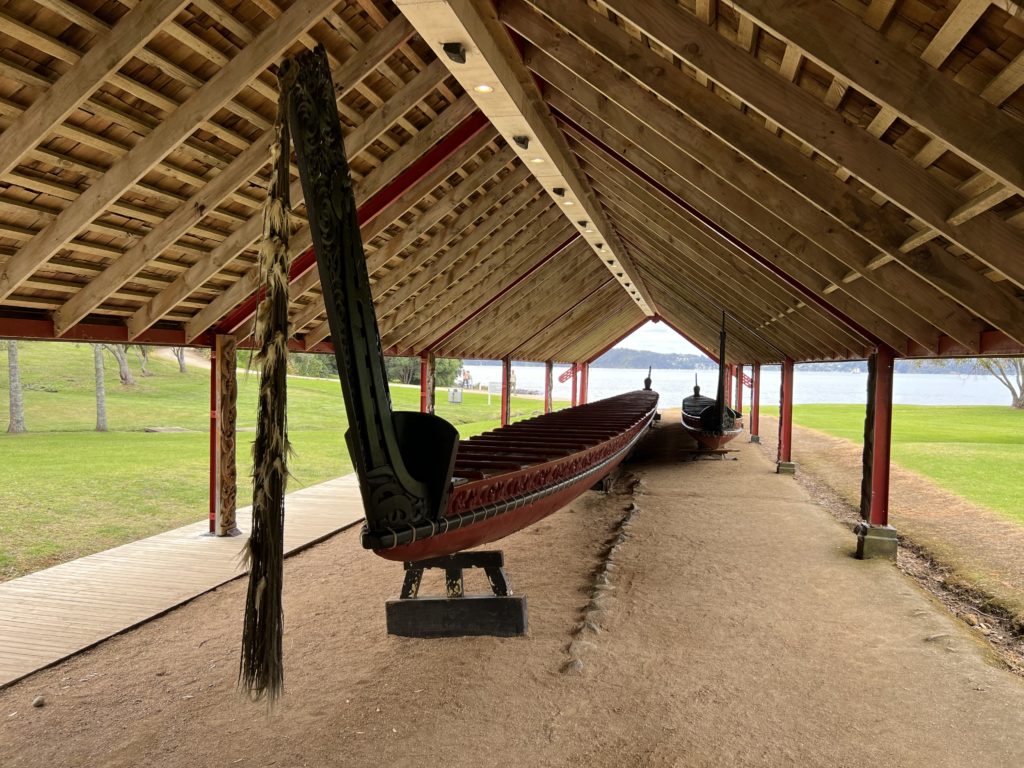After we left Auckland we went to explore the Northland. (A very logical naming of the northern end of the North Island.) It was yet another amazing region to explore and we went scuba diving, sledding down dunes, sailing, and viewing trees that rival the sequoia in size.
Poor Knights Scuba Diving
Poor Knights is a set of islands off the east coast of New Zealand that is now a marine reserve. As a result there are lots of colorful fish amongst interesting rock formations. We dove with a company called Dive Now! and it was among the most relaxed and well organized dives we have ever been on. We saw lots of types of fish, manta rays, and even a couple bronze whaler sharks (that are rarely seen as they are very shy). It was perfect weather and we had great dives. The captain also gave us an up close tour of some of the caves and arches in the area.







Russell and the Bay of Islands
Russell is a quaint little town in the Bay of Islands. We stayed at an AirBnB with a wonderful host that invited us to join her and her friends as their ukulele band held a “jam” session. It was right on the beautiful waterfront, we got to meet several locals, the music was good, and we had lots of fun. We couldn’t believe our luck.



We went sailing in the Bay of Islands aboard the Phantom with a couple who have been sailing all of their lives. We had a perfect day and it was interesting to hear their stories about sailing the world.




Across the bay from Russell are the Waitangi Treaty Grounds which was the site where a treaty was signed on February 6, 1840 between the native Māori and the British that gave the Māori full British citizenship and land rights. Although the treaty was the most progressive for a British colony at the time, its execution was mixed and many Māori were mistreated. The government has been working in recent years to correct misdeeds of the past. There is also a 115 foot war canoe on display that takes more than 70 paddlers to propel and is used every year on Waitangi Day.



Cape Reinga
Cape Reinga is the farthest point north on the North Island. We took a tour that drove us up 90 mile beach (since rental cars are not allowed on the beach). It is an official highway alternative to the paved highway 1. We are glad someone drove us, the entry and exits were a bit sketchy; at one point driving up a stream.


The northernmost point has a lighthouse and an amazing view. Definitely more accessible than the southernmost point of the South Island.


We also went sandboarding on a giant dune. It had rained overnight so the sand was solid and fast. We had a lot of fun but got a bit scraped up. Diane got the worst of it, but she is recovering.



Kauri Trees
We then went down the west coast to the Waipoua Kauri Forest to see massive kauri trees. These trees are similar in size to sequoia and can live for thousands of years. Unfortunately, they are a great hardwood used for ships, furniture, and houses so most of them were cut down in the early 1900s and only a few large ones exist today. We took a twilight tour to see the trees with a local Māori guide and he brought to life the science, history, and Māori legends that surround these trees.


The scale in these photos is hard to appreciate, so here are the stats:
Te Matua Ngahere (photo on left taken at dusk)
“Father of the Forest” estimated to be approximately 3000 years old and is the oldest and widest known kauri tree in the world. This tree is over 16 feet in diameter and has a height of 98 feet.
Tane Mahuta (photo on right taken during the day)
The spiritual “God of the Forest” is estimated to be approximately 2000 years old and is the tallest known kauri tree in the world. This tree is over 13 feet in diameter and has a height of 169 feet.

On our twilight tour we also got to see the under side of a silver fern light up in the dark. The Māori used them to mark paths so they could find their way back home and have a safe journey; and it has become a national symbol in New Zealand.

We then went to the Kauri Museum in Matakohe and got an even deeper education in all things kauri.


In the photo on the left, Diane is pointing to a ring representing Tane Mahuta, one of the trees we visited. The outermost ring is the largest known kauri that was cut down. Dave is standing next to a cross section of a 900 year old kauri tree.
The kauri gum was also valuable for making various products and the museum has a large collection. Some of it contains fossilized insects and lizards.


This wrapped up our visit to the Northlands, next up is a loop through the southern part of the North Island.
Love to read about your great adventures! And learning so much about NZ and Maoris